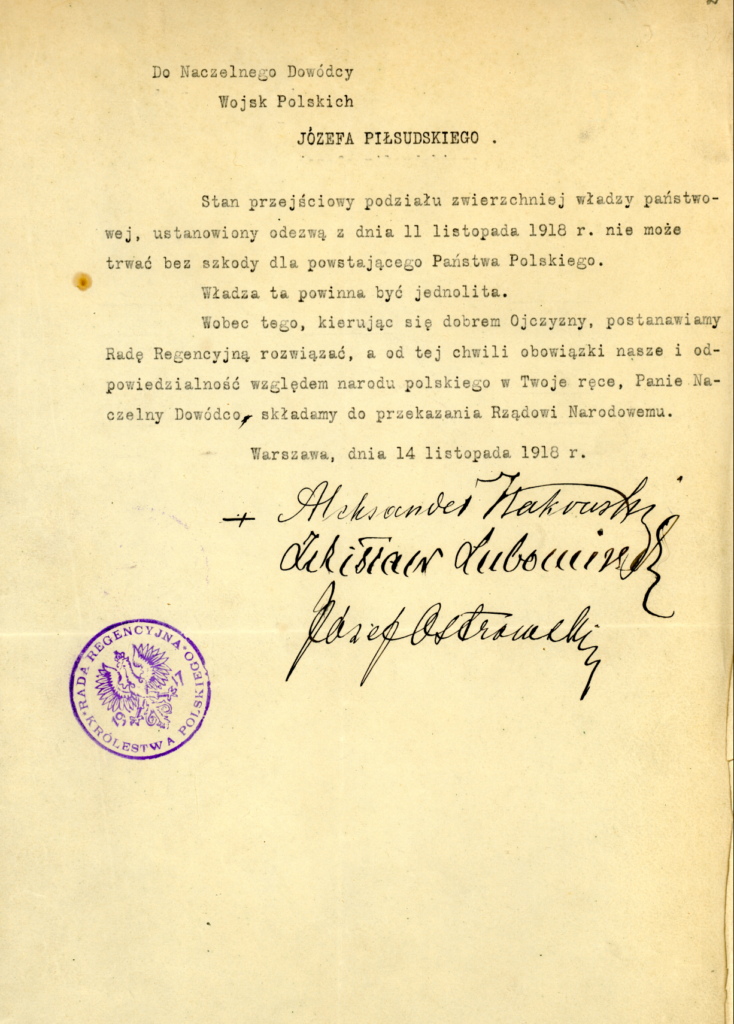
The arrival of Piłsudski in Warsaw – Warsaw
Polish figure of the „Creation of the modern states (1918-1920)” topic
In November 1918, the geopolitical landscape of Europe was dramatically transforming. The once-mighty empires of Germany and Austria-Hungary were crumbling under the weight of war and internal dissent, creating a vacuum and a unique opportunity for suppressed nations to assert their independence. Amidst this backdrop, the Regency Council of the Kingdom of Poland, a provisional government was set up under the influence of the occupying forces.
Piłsudski, a revered military leader and a staunch advocate for Polish independence, had previously formed and commanded the Polish Legions, as a part of the Austro-Hungarian Army. His refusal to swear allegiance to the German and Austo-Hungarian Emperors led to his imprisonment in Magdeburg in 1917, only heightening his status as a symbol of resistance and national pride. His release was demanded by the Polish populace and eventually conceded by the weakening German authorities, who were keen on stabilizing the Eastern front.
Upon his release on November 8, Piłsudski made his way to Warsaw, arriving on the 10th. His return was orchestrated with profound symbolic importance—it was a signal to the Polish people and the watching world that Poland was ready to reclaim its place as a sovereign nation. His meeting with Prince Zdzisław Lubomirski, a member of the Regency Council, was critical. Piłsudski agreed to join the council, not as a revolutionary bent on disrupting the existing order through violence, but as a leader who would use his influence and authority to steer the nation through a negotiated transition of power.
On November 11, now celebrated as National Independence Day in Poland, the Regency Council officially appointed Piłsudski as Commander in Chief and Minister of Military Affairs. This appointment marked the beginning of Piłsudski’s pivotal role in shaping modern Poland.
This period was crucial not only for the establishment of Poland’s sovereignty but also for laying down the foundational principles of the new state. Piłsudski’s vision for an independent Poland was rooted in a broader context of self-determination, a principle that was gaining ground across Europe following the war. His leadership in the early days of the republic set the tone for the future, influencing the political, social, and economic restructuring that would follow. As Poland stepped out of the long shadows cast by its partitioners, it was Piłsudski’s leadership on that fateful day in November that would forever be remembered as a turning point in the Polish saga.
Further reading:
Hetherington, P. (2012). Unvanquished : Joseph Pilsudski, resurrected Poland, and the struggle for Eastern Europe. Houston.
Jędrzejewicz, W. (1995). Pilsudski a Life for Poland. New York.
Facts





